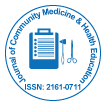Towards Prevention and Equity in Pediatric Fracture Care
Received: 07-Mar-2025 / Manuscript No. jcmhe-25-167364 / Editor assigned: 10-Mar-2025 / PreQC No. jcmhe-25-167364 (PQ) / Reviewed: 24-Mar-2025 / QC No. jcmhe-25-167364 / Revised: 31-Mar-2025 / Manuscript No. jcmhe-25-167364 (R) / Published Date: 07-Apr-2025
Description
Pediatric fractures represent one of the most common injuries sustained by children and adolescents worldwide, yet their epidemiological patterns and economic implications remain underappreciated in global health discourse. As nations increasingly focus on child health and safety, the growing burden of pediatric fractures demands urgent attention. These injuries, while often not fatal, carry significant short- and long-term consequences, both medically and financially, for families and healthcare systems. Addressing this issue requires a comprehensive understanding of the epidemiology of fractures in children and an acknowledgment of the often-overlooked economic ripple effects that follow.
Fractures in children occur due to a complex interplay of factors including bone development, activity level, environmental hazards and socioeconomic conditions. Unlike adults, children have more pliable bones that are still growing, making them susceptible to specific types of fractures such as greenstick and growth plate injuries. Epidemiological data consistently show that boys sustain fractures more frequently than girls, especially during the adolescent growth spurt when bone density may not keep pace with rapid skeletal growth. Common fracture sites include the forearm, wrist, clavicle and ankle, often resulting from sports, falls, or traffic accidents.
Geographical and cultural factors further influence the incidence and type of pediatric fractures. In high-income countries, increased participation in organized sports and recreational activities contributes to higher fracture rates, particularly in older children. In contrast, in low- and middle-income countries, fractures more often result from falls from heights, unsafe play environments, or road traffic injuries, reflecting disparities in infrastructure, supervision and child safety regulations. Moreover, underreporting and limited access to radiographic diagnosis in resource-constrained regions likely mask the true burden of pediatric fractures globally.
Beyond epidemiology, the economic burden associated with pediatric fractures is substantial and multifaceted. At the healthcare system level, these injuries contribute significantly to emergency room visits, surgical interventions, follow-up care and rehabilitation services. In many countries, pediatric fractures rank among the top reasons for pediatric hospital admissions. Although fractures are generally treatable, the cost of operative procedures, casting materials, diagnostic imaging and hospital stays accumulates rapidly, particularly when surgical fixation or prolonged therapy is required.
The burden extends well beyond direct medical expenses. Indirect costs such as parental work absenteeism, transportation to medical appointments, school absences for the child and long-term physical therapy can exert significant financial and emotional pressure on families. In households with limited income or no health insurance coverage, even a single fracture can strain the budget, leading to tradeoffs in other essential areas such as nutrition or education. The financial toll is even more pronounced in regions where public health coverage is limited and out-of-pocket expenditure dominates healthcare financing.
Moreover, certain fractures—especially those involving growth plates— can lead to complications such as limb length discrepancies or angular deformities, requiring extended monitoring or corrective surgery. Such long-term consequences not only increase medical costs but also impact the child’s functional capacity and quality of life. In severe cases, pediatric fractures can result in permanent disability, further escalating the social and economic burden on both the individual and the society at large.
From a policy standpoint, the under-recognition of pediatric fractures in global health agendas is a missed opportunity for prevention and cost containment. Injury prevention strategies targeting pediatric populations are still inconsistently implemented across countries. Investments in safe playgrounds, childproof housing, helmet and seatbelt laws, physical education programs focused on safe movement techniques and parental education are relatively inexpensive compared to the cumulative cost of treating fractures. In addition, school-based screening for risk factors such as poor bone health or obesity could aid early intervention, as these conditions are increasingly linked to higher fracture risk.
There is also a critical need for standardized data collection and surveillance mechanisms. In many low-resource settings, pediatric injury registries are either nonexistent or incomplete, making it difficult to design effective interventions. Without reliable data on the incidence, causes and outcomes of pediatric fractures, policies remain reactive rather than preventive. Collaboration between public health authorities, orthopedic societies and international child health organizations can facilitate the development of global databases that inform evidence-based strategies.
In conclusion, pediatric fractures are a global public health issue with considerable epidemiological significance and economic consequences. They affect millions of children each year, placing a heavy burden on families, communities and healthcare systems. Despite their frequency and impact, these injuries are often overlooked in national and international health strategies. A proactive approach that integrates injury prevention, early diagnosis, affordable care and long-term followup is essential. By recognizing pediatric fractures as a preventable and manageable component of child health, we can improve outcomes for children globally and alleviate an economic burden that, while often hidden, is profoundly felt across society.
Citation: Meyer T. (2025) Towards Prevention and Equity in Pediatric Fracture Care. J Community Med Health Educ 15:928.
Copyright: © 2025 Meyer T. This is an open-access article distributed under the terms of the Creative Commons Attribution License, which permits restricted use, distribution, and reproduction in any medium, provided the original author and source are credited.
Select your language of interest to view the total content in your interested language
Share This Article
Recommended Journals
Open Access Journals
Article Usage
- Total views: 185
- [From(publication date): 0-0 - Aug 30, 2025]
- Breakdown by view type
- HTML page views: 140
- PDF downloads: 45
